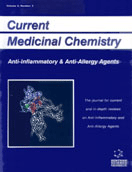Abstract
Progress in the management of allergic diseases including asthma, pollen diseases and atopic dermatitis has recently improved patients quality of life. In addition to steroids, which are powerful inhibitors of allergic inflammation, other anti-allergic compounds, humanized anti-IgE antibody and cytokine modulators have been developed. However, the world-wide prevalence of allergic diseases has been increased during the last two decades, making early intervention to prevent the development of such diseases essential. Through analysis of the clinical evaluation of one kind of traditional remedy in patients with atopic dermatitis, flavonoids were shown to possess significant anti-allergic activity. Among the twenty kinds of flavonoids examined, fisetin, luteolin, apigenin, quercetin and kaempferol inhibited not only the release of chemical mediators but also the production of T-helper (Th)-2 type cytokines (Interleukin (IL)-4, IL-5 and IL-13) by basophils. These flavonoids inhibit expression of these cytokines through their inhibitory effect on the activation of several calcium-calmodulin dependent kinases. Administration of either persimmon leaf extract, which is rich in flavonoids, or its major ingredient astragalin (a glycoside of kaempferol), in atopic dermatitis-model mice (NC / Nga) prevented the onset of dermatitis and showed a substantial ameliorative effect even in mice with open dermatitis. Moreover, a double-blind, randomized, placebo-controlled trial of flavonoid in patients with atopic dermatitis showed a significant effect. These results indicate the possibility that flavonoids, which are contained in vegetables, fruits and tea, may constitute a complementary and alternative medicine for allergic patients and may act as a prophylactic substance against the development of allergic diseases.
Keywords: flavonoid, allergy, mast cells/basophils, prevention, complementary and alternative medicine
 29
29

